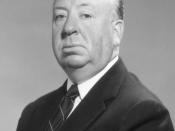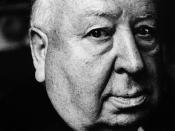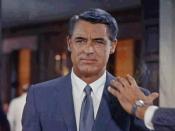Murder by strangulation. Women wearing glasses. Domineering mothers. Stairs. Trains. Brandy. These are just a few examples of some recurring images in Alfred Hitchcock's films. Much has been written about these Hitchcock obsessions, and it is a widely accepted belief that these common themes hold a much deeper meaning. Another particular favorite was the motif of the poisoned drink, which first was introduced in The Lady Vanishes and then reappeared in other films such as Suspicion and Notorious. His apparent alcoholism could offer an explanation into his initial interest in the idea of a "potent drink."ÃÂ But with each subsequent film he used the idea of the drugged drink in more complex ways, essentially as tools in achieving great cinematic effects.
Among many of his distinguishing characteristics, Hitchcock was always known to enjoy his alcohol, brandy in particular. In The Dark Side of Genius, Donald Spoto points out that his beloved brandy appears, like his own cameo, in fifty-one of his fifty-three films (p.
267). In addition many of his characters onscreen can be seen drinking, as some may even appear to be alcoholics (e.g. Cary Grant's character in North by Northwest). So how does this obsession of Hitchcock's relate to the recurring theme of the poisoned drink? Spoto makes the connection when he quotes Hume Cronyn, who described Hitchcock as the perfect host, who "took a marvelous, malicious delight in seeing his guests fall apart with all those vintage wines and liquor he'd force."ÃÂ Spoto added that similarly "Hitchcock managed to insert with equally marvelous, malicious delight, the motif of the drugged drink"ÃÂ in the treatments of some of his films. So Hitchcock's fascination with the poisoned drink is in a sense an extension of his fondness of alcohol.
In addition, Hitchcock used the idea of poison to make...


